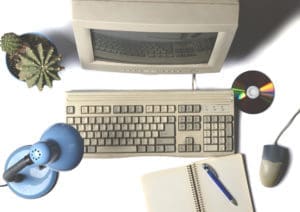 Some hackers break into networks in search of confidential information, often with the idea of selling it on the dark web. Others want to disrupt a competitor’s operations. But for some, the hacking itself is the primary goal: Can it be done?
Some hackers break into networks in search of confidential information, often with the idea of selling it on the dark web. Others want to disrupt a competitor’s operations. But for some, the hacking itself is the primary goal: Can it be done?
That was the case for the 414s, a group of teenage hackers living in Milwaukee in the early 1980s. They wanted to see how far their hacking could go—and if they were able to play a game on a computer hundreds of miles away, all the better.
The 414 group’s formation
The year was 1983, and the movie “WarGames” starring Matthew Broderick was a box office hit. The story of a teenage boy who hacks into a military supercomputer was, not surprisingly, popular with a group of teenage boys who had met through a computer programming club. In a nod to street gang culture, the friends began calling themselves the “414s” after Milwaukee’s area code, and they started staying up all hours to hack into computer networks. After all, exploring bulletin board systems and building modems can get kind of old.
They would try different phone numbers on their modems, seeing which generated a hit, and then try various passwords (think of passwords with the security level of “systemsystem.”). Unwitting network administrators at facilities across the U.S and Canada, including at Sloan-Kettering Cancer Center and Security Pacific National Bank, found their systems compromised—but the 414s were only interested in determining whether they could (1) achieve the hack and (2) play a digital game on the computer.
The stakes get higher
The 414s’ next target became Los Alamos National Laboratory in New Mexico, home to the U.S. nuclear program. The FBI noticed the system infiltration and began surveillance. The 414s knew something was up when their modems began clicking and shutting down sporadically, with the game up completely when FBI agents showed up at their doors.
It was quickly apparent the 414s were hacking out of curiosity. Members of the 414s who were over 18 received two years’ probation and $500 fines; Neal F. Patrick, still age 17, achieved 15 minutes of fame traveling the talk show circuit. Patrick also testified before Congress on computer security, urging the use of stronger passwords, with laws the group inspired still on the books today.
Some of the 414s have gone on to technology jobs; others, like Patrick, have left the industry. You can learn more about these early hackers in the CNN Films documentary “The 414s: The Original Teenage Hackers.”
Photo: Vladimir Sukhachev / Shutterstock

Great article I am going to check out the documentary